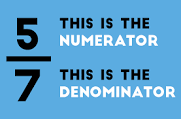My apologies, I’m doing a series of rants that are something akin to David Letterman’s Stupid Pet Tricks. Instead these posts are about Stupid Sales Management/Marketing/Sales Tricks.
Sales and marketing are among the most measured functions around. But having these metrics, knowing what they mean, developing and executing plans to improve performance and knowing what to do about them are not well understood.
Too often, we leap to the stupid answer, not to the answers that really turn the dials on performance.
Here are some examples, while they may seem laughable, they are real. I’m not smart enough to make this stuff up.
- The sales manager declaring to everyone on the team, “You need to have three time coverage in your pipelines!” He does this because people always seem to use 3X as the coverage model. It doesn’t make any difference that at least 50% of the team have win rates of 20-25%!
- The manager then wonders why the team isn’t making their numbers.
- Or the marketing/sales manager who declares, “We only got 15K opens on that last 150K email campaign! We need 30K to get the volume of leads to feed sales.” And then what they do is send out twice as many emails.
- Or the outbound sales manager saying, “It takes 15 K dials to generate 150 good conversations. We need 450 good conversations, so we need to ramp our dialer to make 45K dials!
So now I get twice as many emails and three times as many phone calls to ignore.
And I know when these marketing and sales managers see the upped volumes aren’t producing results, they’ll up them more.
See, math shows relationships, for example the relationship for between a numerator and a denominator. But math often doesn’t give insight about the number that is produced.
For those of you who are mathematically challenged, the numerator is on top, the denominator is on the bottom (no, I’m not trying to get kinky). Here’s a little picture:
For example, if we win 33 out of 100 deals, the way the math works for our win rate is 33/100= 33% (OK I snuck an extra step in on you, and converted the 0.33 to a percentage. If you need a math tutorial, call me.) If our win rate is 33% and we need to close 100 deals, we need 300 in our pipeline. That’s where those coverage models come from.
Extending the same math to the phone example above, our conversation rate is 1% and the conversion rate on our email campaign is 10%.
Somehow, as we look at the volumes necessary to make our numbers, we treat those conversion rates or percentages as fundamental laws of nature (kind of like the freezing point of water is 32 degrees F, 0 C, or 273.15 K).
I suppose we never challenge those ratios, because it’s hard work! We have to really think about what drives those numbers. It’s just easier to scale rather than change the ratio.
But the magic to productivity and performance is all in the numerator. Changing the numerator for a given denominator really starts tilting all the numbers in our favor.
It’s hard work, it takes deep understanding of what drives success. For example, outbound phone calls are very important to our business. We continually refine who we are calling, how we engage, when we call….. Rather than a 1% answer rate, we have 50%. So, if like the previous example, we need to have 450 conversations, we only have to make 900 dials, not 45K! Our win rates are in the 82-90% range. So we only have to have 1.2 time pipeline coverage. (You might be curious about how we achieve those win rates, we are vicious in disqualifying opportunities, focusing only on real deals in the dead center of our sweet spot with highly motivated buyers).
Ironically, when we don’t tear apart those ratios, understanding what really drives the result–when we just scale those same ratios to achieve the numbers we need, we have to work much harder to achieve the same results(45K dials versus 900!)
It isn’t too hard to understand how to tilt the ratios and numbers in our favor. It takes a little thoughtfulness, analysis, and critical thinking. It takes really understanding what works and what doesn’t work, focusing more time on the things that work.
Unfortunately, as simple as it is, too few take this time, so they are always struggling for results.
Afterword: I’m sorry that I’m venting my frustration on you. I’m just getting tired of simplistic math and thinking from too many “experts” on volume/velocity scaling.
Another afterword or intriguing fact: Water actually doesn’t always freeze at 32 F, 0 C. Here’s a fascinating explanation: https://www.smithsonianmag.com/science-nature/at-what-temperature-does-water-freeze-1120813/ Think of it as a fun conversation starter at those networking events—“Hey, did you know water doesn’t always freeze……”
Leave a Reply